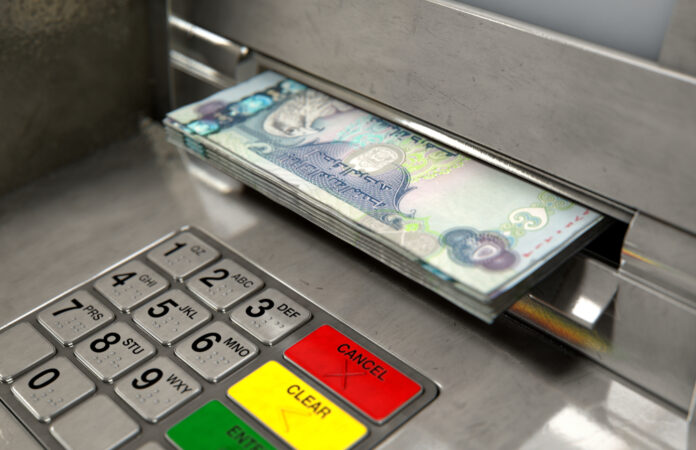Gross credit in the UAE declined by a monthly rate of 0.8 percent in October to hit 1.76 trillion dirhams ($480 billion) on falls in both domestic and foreign credit, according to data published by the country’s central bank.
The October decline in gross credit is the largest since March and is in contrast to September’s performance, when it rose 0.3 percent month-on-month.
Domestic credit went down due to drops related to the government, public, and private sectors. Credit provided to non-banking financial institutions rose by 2.7 percent, the central bank said in a press release issued Dec. 6.
In September, domestic credit increased by 0.2 percent to 1.6 trillion dirhams, while foreign credit, which includes loans, trade bills and advances to non-resident companies other than banks, grew 0.8 percent to 164.4 billion dirhams.
Bank deposits in the UAE went up by a monthly rate of 1.3 percent in October to hit 1.97 trillion dirhams. This was the fifth consecutive month of growth and is the highest monthly rate since June.
This was mainly attributed to a 1.7 percent rise in residential deposits, offsetting a 1.7 percent drop in non-residential deposits.
Outside of residential deposits, government and public sectors experienced the highest increases, jumping by 5.5 percent and 3 percent, respectively. At the same time, private sector deposits edged up slightly, rising by only 0.6 percent.
The monthly rate of growth in deposits accelerated from 0.7 percent recorded in September when resident deposits grew 0.3 percent to 1.7 trillion dirhams while non-resident deposits jumped 3.7 percent to 243.2 billion dirhams.
The central bank also said that the gross banks’ assets increased by 0.7 percent in October when compared to the previous month. The balance stood at 3.27 trillion dirhams by the end of the month.
The UAE’s monetary base, which includes currency issued and bank reserves among others, grew by 1.3 percent month-on-month in October. This was driven by widenings in both issued currency and banks’ current accounts and overnight deposits with the central bank.
Moreover, M1, a monetary aggregate encompassing currency outside banks and short-term monetary deposits, underwent a 0.5 percent monthly increase in October. This was attributed to jumps in both of its components.
Additionally, a wider measure of money, M2, rose by 0.8 percent on more quasi-monetary deposits and a higher M1. Quasi-monetary deposits consist of residential time and savings deposits in local currency in addition to residential deposits in foreign currencies.
Similarly, M3 increased due to larger government deposits as well as higher M1 and M2.
UAE government switches weekend to Saturday-Sunday starting 2022UAE’s new 50-dirham banknote features Sheikh Zayed

